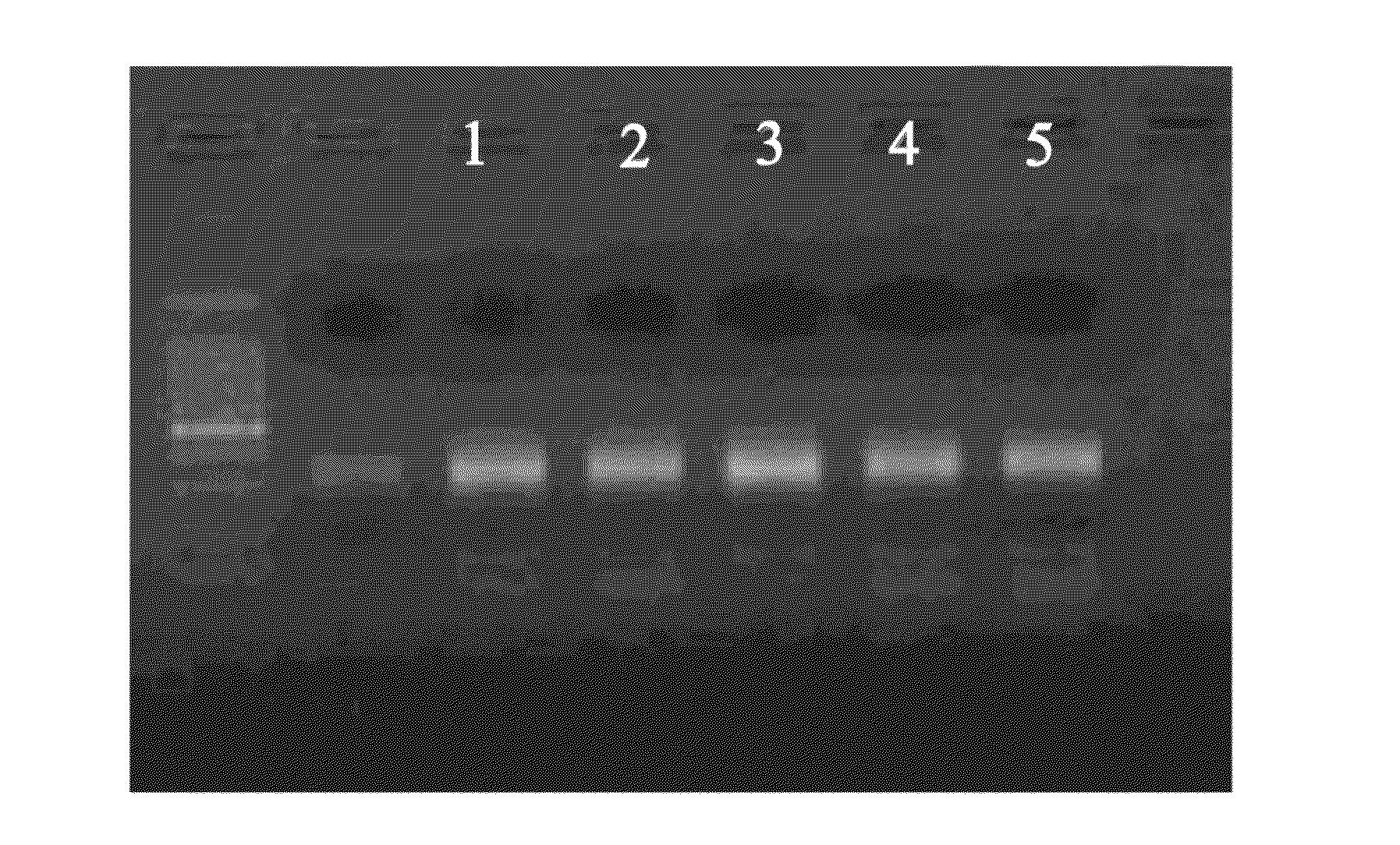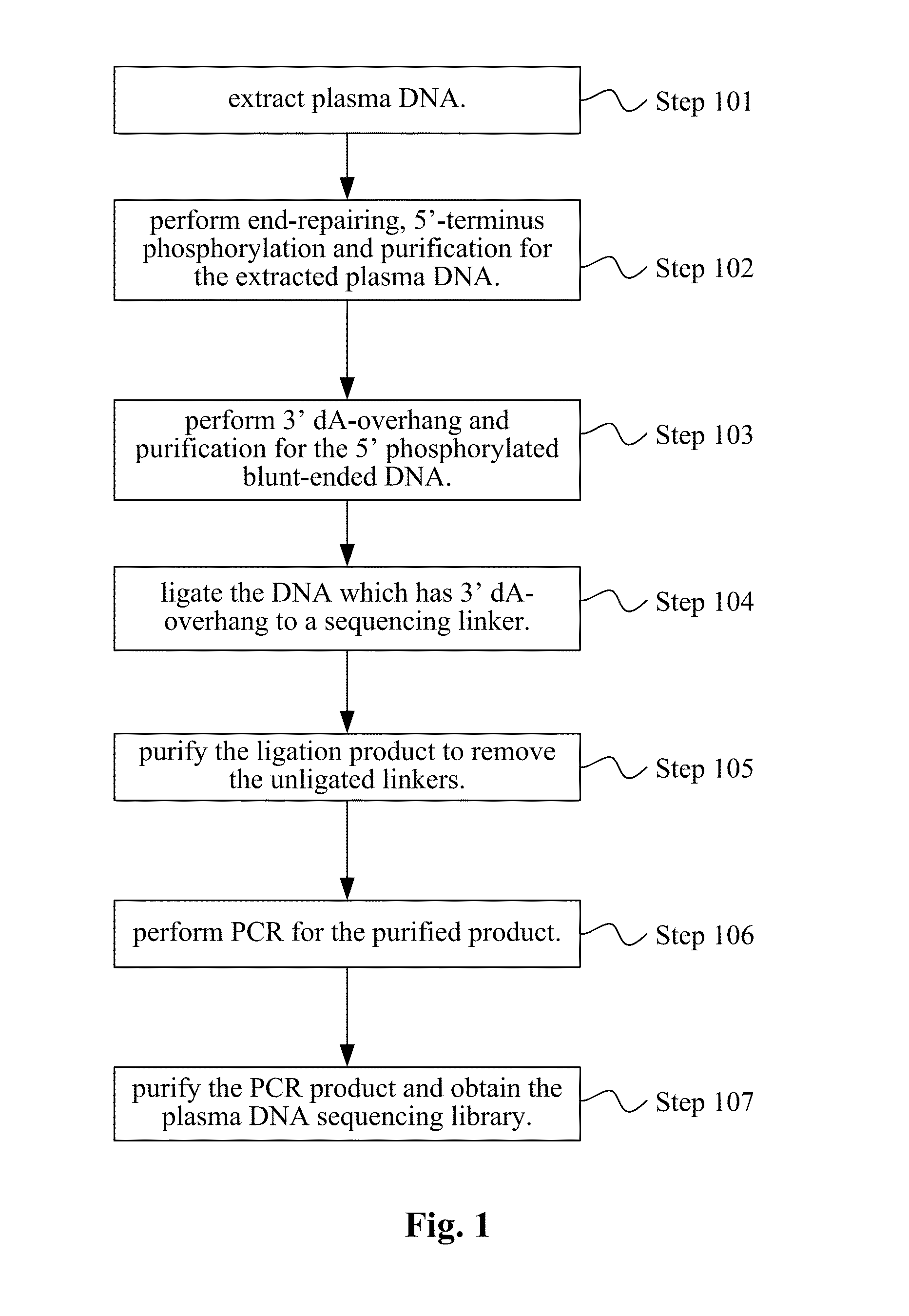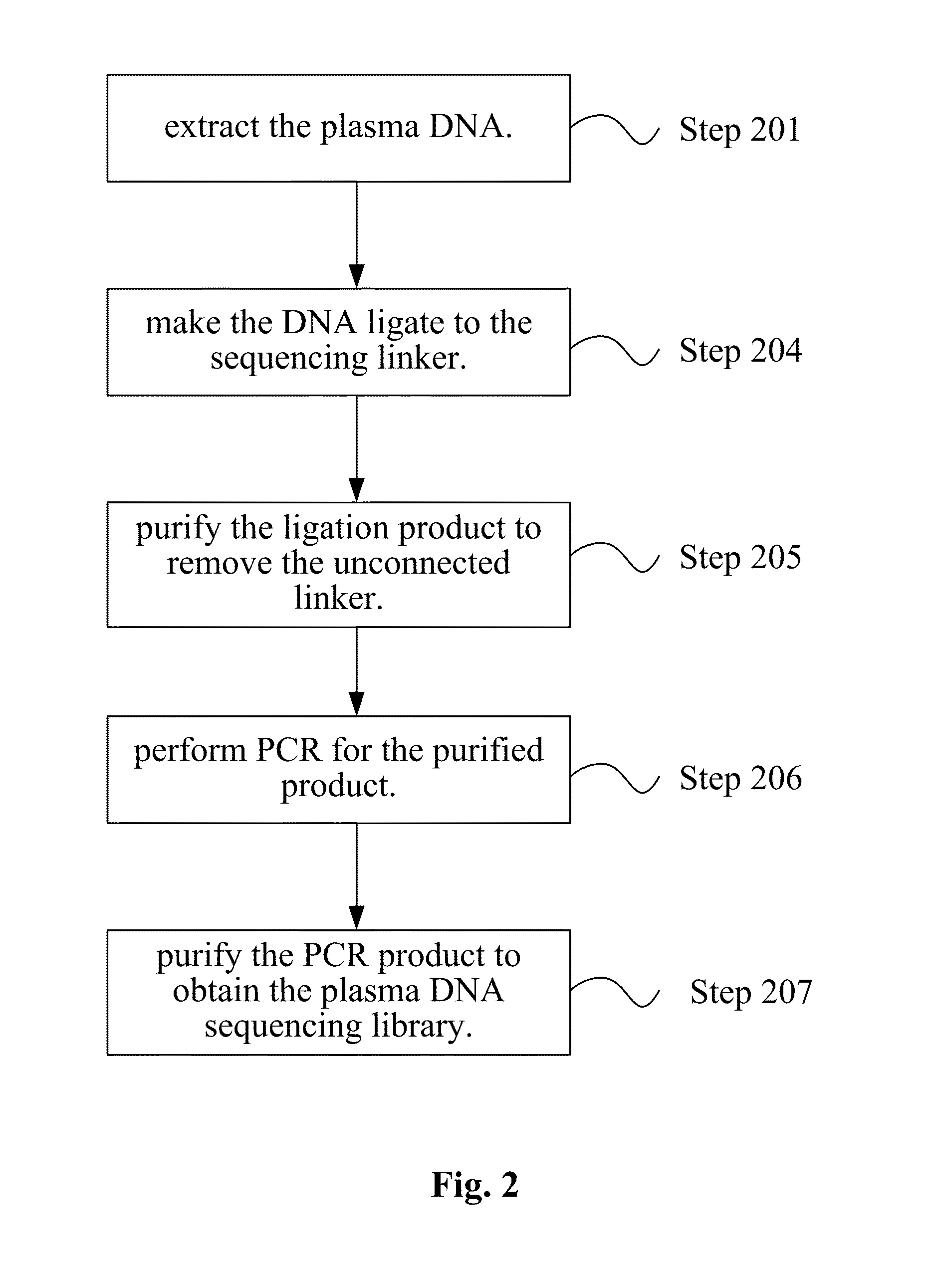Method and kit for constructing plasma DNA sequencing library
- Summary
- Abstract
- Description
- Claims
- Application Information
AI Technical Summary
Benefits of technology
Problems solved by technology
Method used
Image
Examples
embodiment 1
[0035]The method for constructing a plasma DNA sequencing library in the embodiment 1 mainly includes the steps as follows:[0036](1) extracting plasma DNA: this step can be performed by using any method and reagent suitable for extracting the plasma DNA which are known by those skilled in the art.[0037](2) performing end-filling, and then cleaning and purifying the products: this step can be performed by using any method and reagent suitable for end-filling and the following step of cleaning and purification which are known by those skilled in the art. For example, the T4 DNA polymerase, and the Klenow can be used as the enzyme for end-filling.[0038](3) performing dA-overhang, and then cleaning and purifying the products: this step can be performed by using any method and reagent suitable for performing dA-overhang and then cleaning and purifying the products which are known by those skilled in the art. For example, a base can be over-hanged from the double-strand ends by the produc...
embodiment 2
[0054]The method for constructing a plasma DNA sequencing library of the embodiment 2 is basically similar to the embodiment 1; the difference is that, the embodiment 2 does not include the end-filling step, and directly performs dA-overhang and purification for the extracted plasma DNA.
One Embodiment of Sequencing the Plasma DNA Samples by using the Method According to the Embodiment 2 of the Disclosure is Shown as below
[0055]Step 1: extracting approximate 5 ng of the plasma DNA.
[0056]Step 2: preparing the reaction mixture as shown in Table 5, and incubating at 37 degrees centigrade for 30 min, so as to overhang polyadenylation tail at the 3′-termiaus of the DNA fragment; purifying the DNA samples by a purification column, and eluting the samples with 25 μl of sterile dH2O or elution buffer.
TABLE 5Blunt-ended DNA32 μlKlenow reaction buffer (10×) 5 μlklenow ex-(3′-5′ exonuclease inactivity) 3 μldATP solution10 μlSterile H2O 0 μlTotal volume50 μl
[0057]Step 3: preparing the reaction m...
embodiment 3
[0063]The method for constructing a plasma DNA sequencing library of the embodiment 3 is basically similar to the embodiment 1; and the difference is that, in the embodiment 3, the end-filling and the dA-overhang are performed in one reaction system, the step of cleaning and purifying is omitted between the end-filling and the dA-overhang, wherein the dA-overhang uses the ordinary Taq enzyme instead of the commonly-used Klenow ex-enzyme, in order to make the buffer systems of the two reactions be compatible.
One Embodiment of Sequencing the Plasma DNA Samples by using the Method According to the Embodiment 3 of the Disclosure is Shown as Below
[0064]Step 1: extracting approximate 5 ng of the plasma DNA.
[0065]Step 2: preparing the reaction mixture as shown in Table 8, and incubating at 37 degrees centigrade for 20 min (end-filling), and then incubating at 72 degrees centigrade for 20 min (dA-overhang), so as to perform the end-filling and dA-overhang in one reaction system; purifying t...
PUM
| Property | Measurement | Unit |
|---|---|---|
| Plasma power | aaaaa | aaaaa |
Abstract
Description
Claims
Application Information
 Login to View More
Login to View More - R&D
- Intellectual Property
- Life Sciences
- Materials
- Tech Scout
- Unparalleled Data Quality
- Higher Quality Content
- 60% Fewer Hallucinations
Browse by: Latest US Patents, China's latest patents, Technical Efficacy Thesaurus, Application Domain, Technology Topic, Popular Technical Reports.
© 2025 PatSnap. All rights reserved.Legal|Privacy policy|Modern Slavery Act Transparency Statement|Sitemap|About US| Contact US: help@patsnap.com



